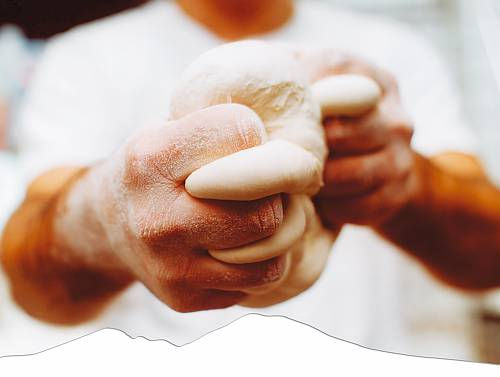An Exploration of Cultural Intangible Heritage
- Molly Gallant

- Feb 5, 2020
- 5 min read
Many of us have heard of, perhaps even visited ourselves, a UNESCO heritage site. From the Great Wall of China to the Canadian Rocky Mountains, UNESCO heritage sites are places of significant history and often beauty. These places are considered to be of outstanding value to humanity and therefore must be protected.
There are currently 1121 properties around the world protected by the UNESCO world heritage site designation. Items on this ever-evolving list have drawn tourists and locals alike to places around the world.
However, not all cultural elements have a tangible, physical form. Some traditions come in the form of dances, songs, even specific food items or rituals. This is where UNESCO’s Cultural Intangible Heritage list comes into play. Rather than identifying specific monuments or sites as requiring protection, this initiative seeks to inventory traditions passed on through generations that play an important role in shaping living culture.
UNESCO defines cultural intangibles as:
“practices, representations, expressions, knowledge and skills – including instruments, objects, artefacts and cultural spaces associated with them – that communities, groups and individuals recognize as part of their cultural heritage.”
These elements have been identified as something to celebrate and safeguard and can be passed on to our descendants through knowledge, skills or rituals.
A brief look at the UNESCO website suggests there are many wonderful cultural intangibles to explore with 549 elements currently recognized in 127 countries. Yet despite this growing movement to protect and maintain our global cultural heritage, there are currently no Canadian intangible cultural heritage elements represented on this list.
In this series of blog posts, I will explore what it takes to become recognized as one of UNESCO’s cultural intangible heritage elements, describe some tantalizing food traditions from around the world (with a deeper look at eating culture in France as told from my experience living and working there) as well as some suggestions for what could be Canada’s cultural intangible heritage element.
Since this is Food Focus, I will be focusing on cultural intangible heritage practices that in some way involve food. Please note, I am not intentionally ignoring the other categories of traditions and practices!

Getting on the List
In order to have an element included on UNESCO’s cultural intangible heritage list, there are a series of steps the representing group must follow. The Convention for the Safeguarding of the Intangible Cultural Heritage is responsible for reviewing submitted documents, providing support where required and eventually approving eligible items.
Eligibility to become a cultural intangible heritage item is as broad as the word “intangible” might have you believe. According to their website, elements must be transmitted from generation to generation, be constantly recreated by communities and groups, provide a sense of identity and community as well as promote respect for cultural diversity and human creativity.
The element itself can be considered part of one or many of the following domains; oral traditions including language; performing arts; social practices, rituals and festive events; knowledge and practice about nature and the universe; and traditional craftsmanship.
Once a cultural element has been identified that fits this somewhat broad criteria, the submitting party must identify their plan for safeguarding the intangible cultural element. One or more inventories of the intangible heritage are then created and updated regularly. This should be done with help from the involved communities and can be assisted by the state or agencies, institutions and organizations.
It is interesting to note that there is no minimum age for how long practices must be established in order for them to be considered elements of intangible cultural heritage. There is also some flexibility in how the documentation is compiled.
The following outline was suggested in UNESCO’s guide for identifying and inventorying Intangible Cultural Heritage:
Identification of the element
Characteristics of the element
Persons and institutions involved with the element
State of the element: viability
Data gathering and inventorying
References to literature, discography, audiovisual materials, archives
Now, how about some examples?
Food Traditions from Around the World
One my favourite ways to explore a new place is by learning about their regional dishes and mealtime rituals. Therefore, it makes perfect sense to me that many of the cultural intangible heritage items pertain to food in some way. Gathering around a meal is a wonderful way to foster social connections and transmit knowledge and skills.
Many of the food-related cultural intangible heritage elements involve preparing, serving or sharing certain foods and drinks, often at certain times of the year. Anything from the way they are executed and the time of year they are served can make a certain food practice worthy of recognition and protection.
So, what can you sample from UNESCO’s list of cultural intangibles?
Neapolitan Pizza
In 2017, Italy was successful in getting the art of the Neapolitan Pizzaiuolo on the list. This culinary practice is comprised of four different phases relating of the preparation of dough and its baking in a wood-fired oven. Originating in Naples, the Neapolitan pizza is not only delicious, but it was also shown to foster social gatherings and intergenerational exchange.
The Mediterranean Diet
Nearby, locals and travellers can enjoy what is broadly referred to as the Mediterranean Diet. Inscribed in 2013, this cultural intangible extends beyond one country’s borders and is recognized and protected in Cyprus, Croatia, Spain, Greece, Italy, Morocco and Portugal. Often upheld as an ideal, health promoting diet, this practice involves a set of skills, knowledge, rituals, symbols and traditions concerning crops, harvesting, fishing, animal husbandry, conservation, processing, cooking and in particular – the sharing and consumption of food.
Eating together is the foundation of the cultural identity in many countries near the Mediterranean Sea. This provides a moment of social exchange and communication as well as an affirmation and renewal of family, group or community identity. When it comes to the Mediterranean diet, everything – even the dishes in which meals are prepared, stored and served – are part of the practice.
Washoku
The Mediterranean diet is comprised of not one particular food, but many regional dishes while also representing a certain style of eating. Similar to this is a practice known as ‘Washoku’ in Japan. Washoku is a social practice based on a set of skills, knowledge, practice and traditions related to the production, processing, preparation and consumption of food. This practice is embedded with a deep respect for nature that is closely related to the sustainable use of natural resources.
The social and cultural characteristics associated with this practice can be seen especially during New Year’s celebrations where fresh ingredients with symbolic meaning are prepared.
Nsima
A final example is that of ‘Nsima’, a culinary tradition originating in Malawi. Nsima means two things; the culinary and dietary tradition of Malawians as well as the name if a thick porridge dish prepared with maize flour. The process of creating this dish is bound closely to their way of life. Preparation requires specific knowledge from pounding the maize into flour to carefully selecting the accompanying food. Alongside this, certain customs are followed that regulate gluttony, promote cleanliness and cohesion. Eating Nsima is a communal tradition in families and provides an opportunity to strengthen familial bonds.
This is but a small selection of the tantalizing list of items featured on UNESCO’s cultural intangibles heritage list. For a full list, please visit UNESCO’s website: https://ich.unesco.org/en/lists
Stay tuned for my next blog post in this series where I had the opportunity to talk with our favourite food activist, Anita Stewart, about which Canadian foods are worthy of UNESCO’s recognition.
Recommended Citation Format: Gallant, M. "An Exploration of Cultural Intangible Heritage". Food Focus Guelph (73), Department of Food, Agricultural and Resource Economics, University of Guelph, February 5th, 2020.














Have you ever dreamed of making money while playing fun and exciting games on your phone? Well, that dream is becoming a reality for thousands of players in Pakistan through X03 Bet. This app has taken the online gaming world by storm, especially among casino and card game lovers. Whether you’re into Teen Patti, Andar Bahar, or simple slot games, X03 Bet has something thrilling waiting for you.
Are you looking for an easy way to earn money from your mobile phone? Do you enjoy playing simple games in your free time? If yes, then the Shah Spinis perfect for you. This gaming app is quickly becoming popular in Pakistan because it allows users to play games and win real cash.
Mil Win is designed for everyone whether you are a beginner or a pro. It offers many fun games like Teen Patti, Color Prediction, Ludo Earn, Rummy, Car Race Bet, and more. These games are easy to play and don’t need any special skills. Just open the app, choose a game, and start playing.
<p>
Many users are turning to spotify gratis apk as a way to unlock premium features without paying for a subscription. This modified app version gives access to ad-free music, unlimited skips, offline mode, and high-quality sound. While it may sound appealing, it’s important to understand that unofficial apps can carry security risks, lack important updates, and may even lead to account suspension if detected. For those who want the full Spotify experience without issues, the safest choice is always the official premium subscription.
</p>
Inat Pro Apk v14 is the latest release of this popular streaming app, offering access to movies, series, and live TV channels with improved speed and HD quality playback. The updated version comes with bug fixes, a smoother interface, and a vast content library to ensure nonstop entertainment for Android users. Whether you enjoy Turkish dramas, international films, or live channels, Inat TV Pro v14 delivers a reliable and seamless streaming experience.
CastleAPP is a smart mobile application that helps users manage daily tasks, organize schedules, and enjoy entertainment features in one simple, secure, and user-friendly platform.